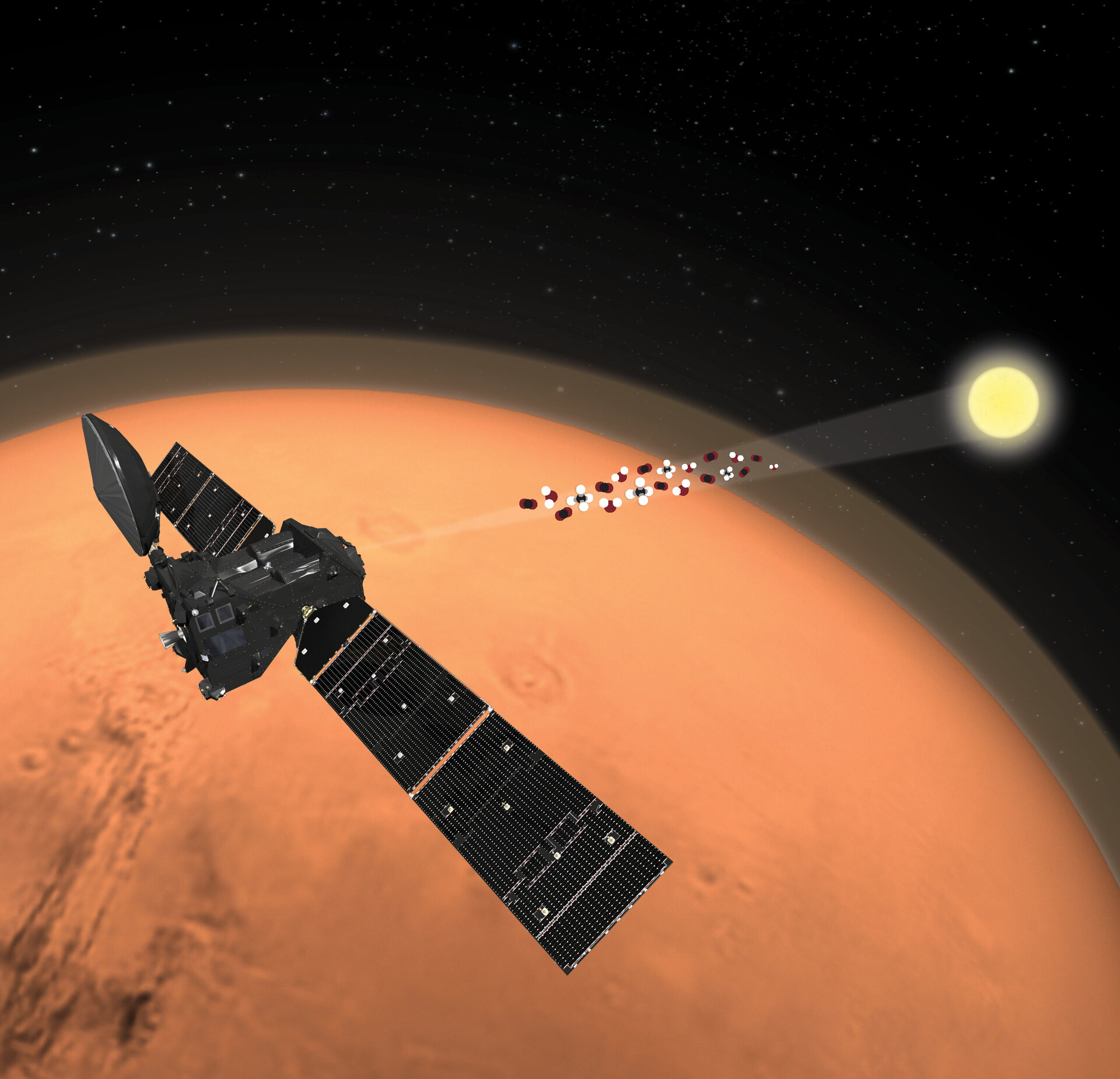What is ExoMars?
The primary goal of the ExoMars programme is to address the question of whether life has ever existed on Mars. This relates to its name, with the ‘exo’ referring to the study of exobiology – the possible existence of life beyond Earth (sometimes also referred to as astrobiology).
The programme comprises two missions. The first launched in March 2016 and consists of the Trace Gas Orbiter (TGO) and Schiaparelli, an entry, descent and landing demonstrator module. The second comprises a rover and surface science platform; as of March 2022, the launch window is under review.
TGO’s main objectives are to search for evidence of methane and other trace atmospheric gases that could be signatures of active biological or geological processes. Schiaparelli tested key technologies in preparation for ESA's contribution to subsequent missions to Mars.
The Rosalind Franklin rover will carry a drill and a suite of instruments dedicated to exobiology and geochemistry research. The 2016 TGO will act as a relay for the surface mission.
For more details see our ExoMars factsheet


